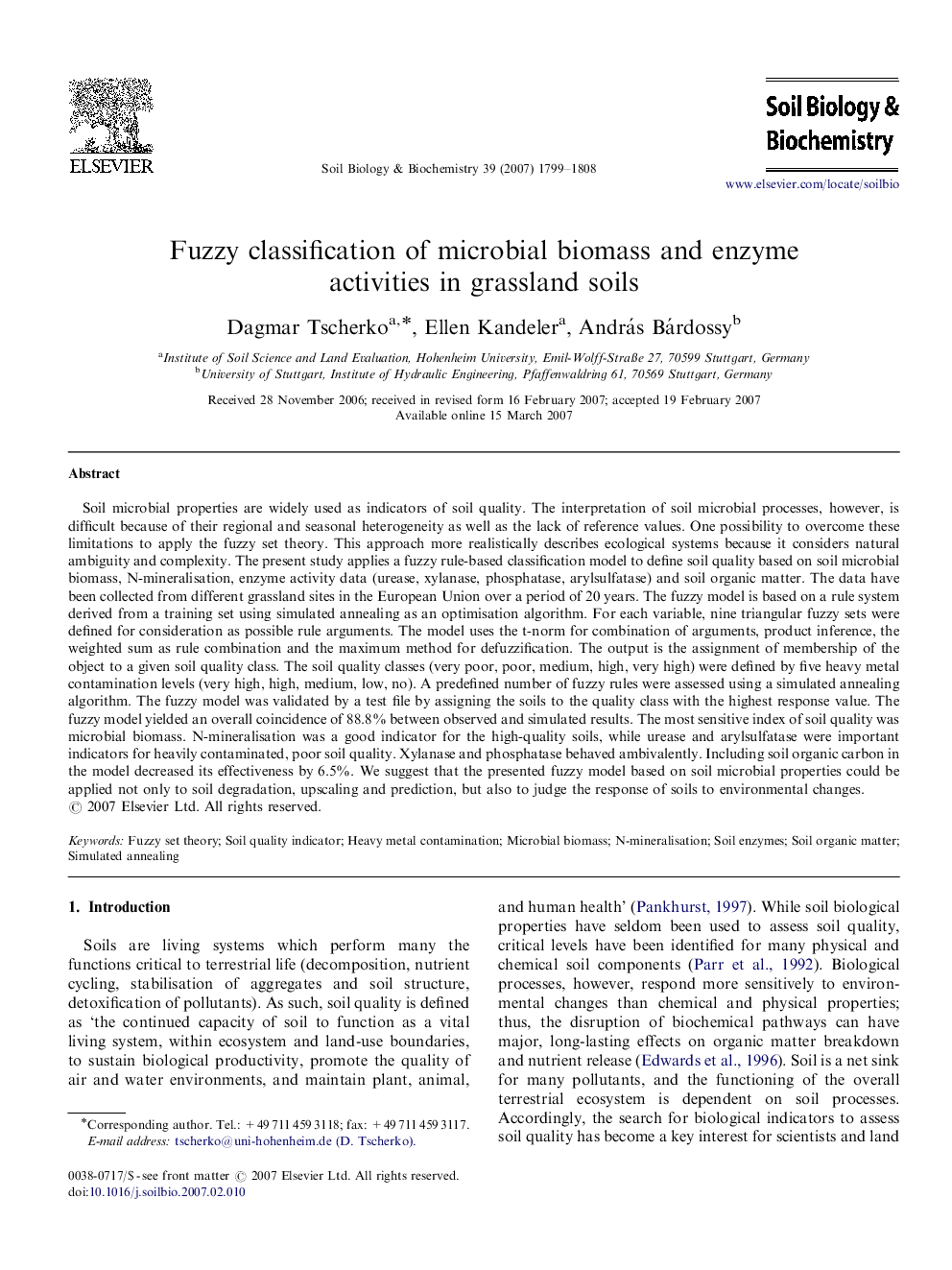| Article ID | Journal | Published Year | Pages | File Type |
|---|---|---|---|---|
| 2026246 | Soil Biology and Biochemistry | 2007 | 10 Pages |
Soil microbial properties are widely used as indicators of soil quality. The interpretation of soil microbial processes, however, is difficult because of their regional and seasonal heterogeneity as well as the lack of reference values. One possibility to overcome these limitations to apply the fuzzy set theory. This approach more realistically describes ecological systems because it considers natural ambiguity and complexity. The present study applies a fuzzy rule-based classification model to define soil quality based on soil microbial biomass, N-mineralisation, enzyme activity data (urease, xylanase, phosphatase, arylsulfatase) and soil organic matter. The data have been collected from different grassland sites in the European Union over a period of 20 years. The fuzzy model is based on a rule system derived from a training set using simulated annealing as an optimisation algorithm. For each variable, nine triangular fuzzy sets were defined for consideration as possible rule arguments. The model uses the t-norm for combination of arguments, product inference, the weighted sum as rule combination and the maximum method for defuzzification. The output is the assignment of membership of the object to a given soil quality class. The soil quality classes (very poor, poor, medium, high, very high) were defined by five heavy metal contamination levels (very high, high, medium, low, no). A predefined number of fuzzy rules were assessed using a simulated annealing algorithm. The fuzzy model was validated by a test file by assigning the soils to the quality class with the highest response value. The fuzzy model yielded an overall coincidence of 88.8% between observed and simulated results. The most sensitive index of soil quality was microbial biomass. N-mineralisation was a good indicator for the high-quality soils, while urease and arylsulfatase were important indicators for heavily contaminated, poor soil quality. Xylanase and phosphatase behaved ambivalently. Including soil organic carbon in the model decreased its effectiveness by 6.5%. We suggest that the presented fuzzy model based on soil microbial properties could be applied not only to soil degradation, upscaling and prediction, but also to judge the response of soils to environmental changes.
